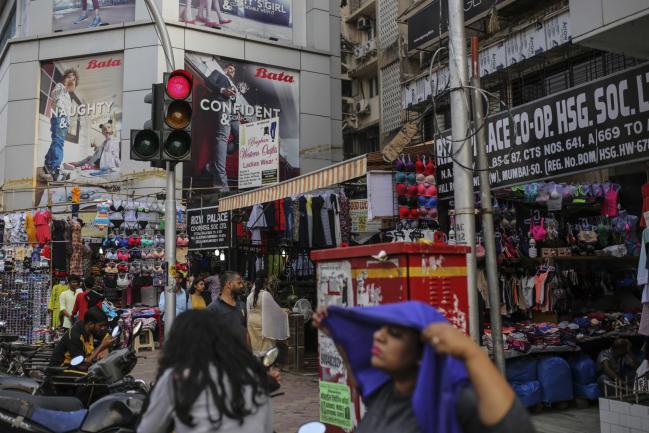(Bloomberg) -- India’s inflation rate dropped below 5 percent for the first time in three months, giving the central bank room to keep interest rates on hold for longer while providing relief to battered bond investors.
Government data on Monday showed inflation at 4.44 percent in February, lower than the 5.07 percent pace in January and below the 4.7 percent estimate of economists polled by Bloomberg News. The easing for the second straight month offers bond investors in India -- the worst performing market among major Asian economies -- something of a temporary cheer. The benchmark 10-year bond yield fell three basis points to 7.60 percent.
“The sharp dip in retail inflation has reinforced our expectation that the MPC would keep the repo rate unchanged in the upcoming policy review in April, which may prompt a further easing of bond yields in the immediate term,” Aditi Nayar, economist at ICRA Ltd. said referring to the central bank’s Monetary Policy Committee that’s scheduled to meet April 4-5.
Most analysts and the Reserve Bank of India itself expect inflationary pressures to gather steam in coming months. The central bank expects inflation to reach 5.1-5.6 percent in the first half of the financial year starting April 1, before easing in the second half. The RBI targets inflation over the medium term at 4 percent with an upper limit of 6 percent and a lower threshold of 2 percent.
|
What Our Economists Say... |
| Inflation above the RBI’s 4 percent target doesn’t warrant concern about a buildup in price pressures. The reason -- the output gap remains wide and there are no signs now of demand-side driven inflationary pressures. |
| -- Abhishek Gupta, Bloomberg Economics |
Last month, one member of the six-member monetary policy committee voted for a rate hike, another gave up his call for rate cuts while Deputy Governor in charge of monetary policy, Viral Acharya, also veered more toward the hawkish camp. The rest, for now, appeared neutral. Still, the MPC voted to keep rates unchanged at its last meeting and flagged the government’s decision to widen budget deficit targets as something that will have an inflationary impact.
"The RBI will have room to push back a rate hike, but not for too long as input price pressures have been on the rise over the past one year, and price pass-through to consumers is now taking place," said Teresa John, economist at Nirmal Bang Pvt. Equities Ltd.
|
Key points from Monday’s price print: |
|
|
|
Analysts expect food inflation to rise because of the seasonal upturn in vegetable prices in the summer, an increase in minimum support price of summer crops that will reflect with a lag, and an upswing in global wheat prices. Moreover, core inflation is sticky at around 5 percent, while an imposition of more tariffs on some imports like mobile phones is likely to boost price pressures, and may prompt RBI to wait and watch.
Uptick
Separate data showed industrial production rose 7.5 percent in January, handily beating estimates of a 6.4 percent rise and a growth of 7.1 percent in December. Also, private sector data showed local passenger vehicle sales grew 7.8 percent in February from a year ago, highlighting steady demand in the economy.
Nevertheless, the recovery from the cash ban and the chaotic introduction of the consumption tax last year has been uneven. India’s dominant services sector contracted in February, with scandals hitting the corporate and banking sectors and weighing on business sentiment.
The RBI expects growth to pick up in the next financial year. It sees gross value added -- a key measure of growth -- increasing 7.2 percent next fiscal year from 6.6 percent this year.
(Adds market reaction in second paragraph.)
